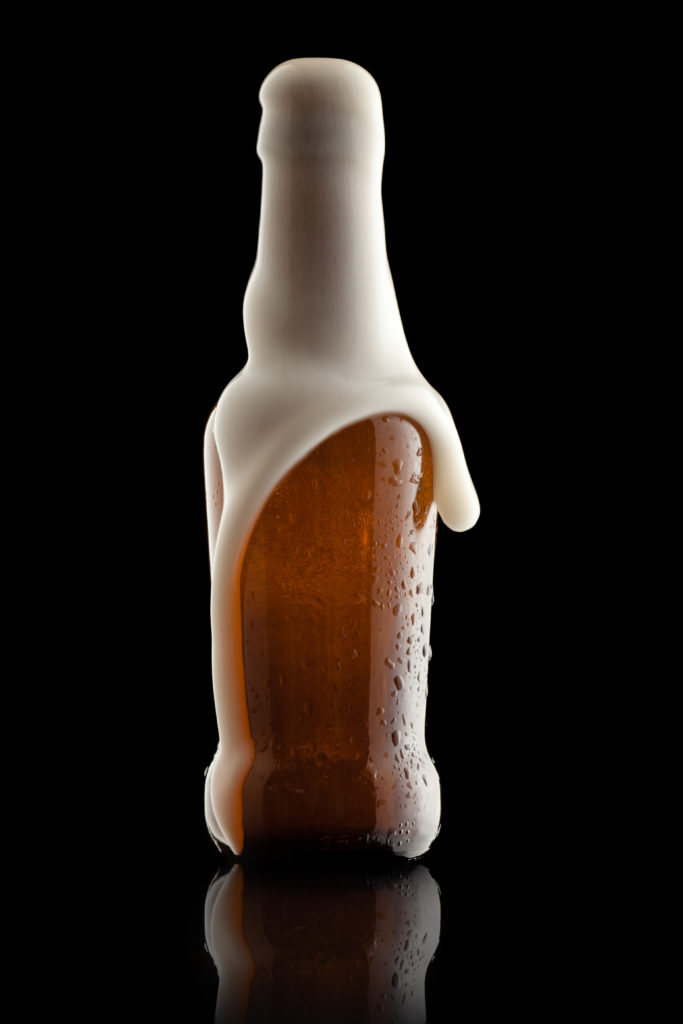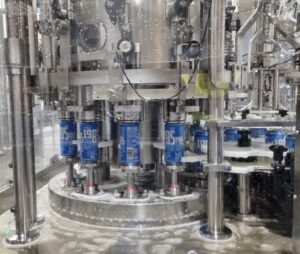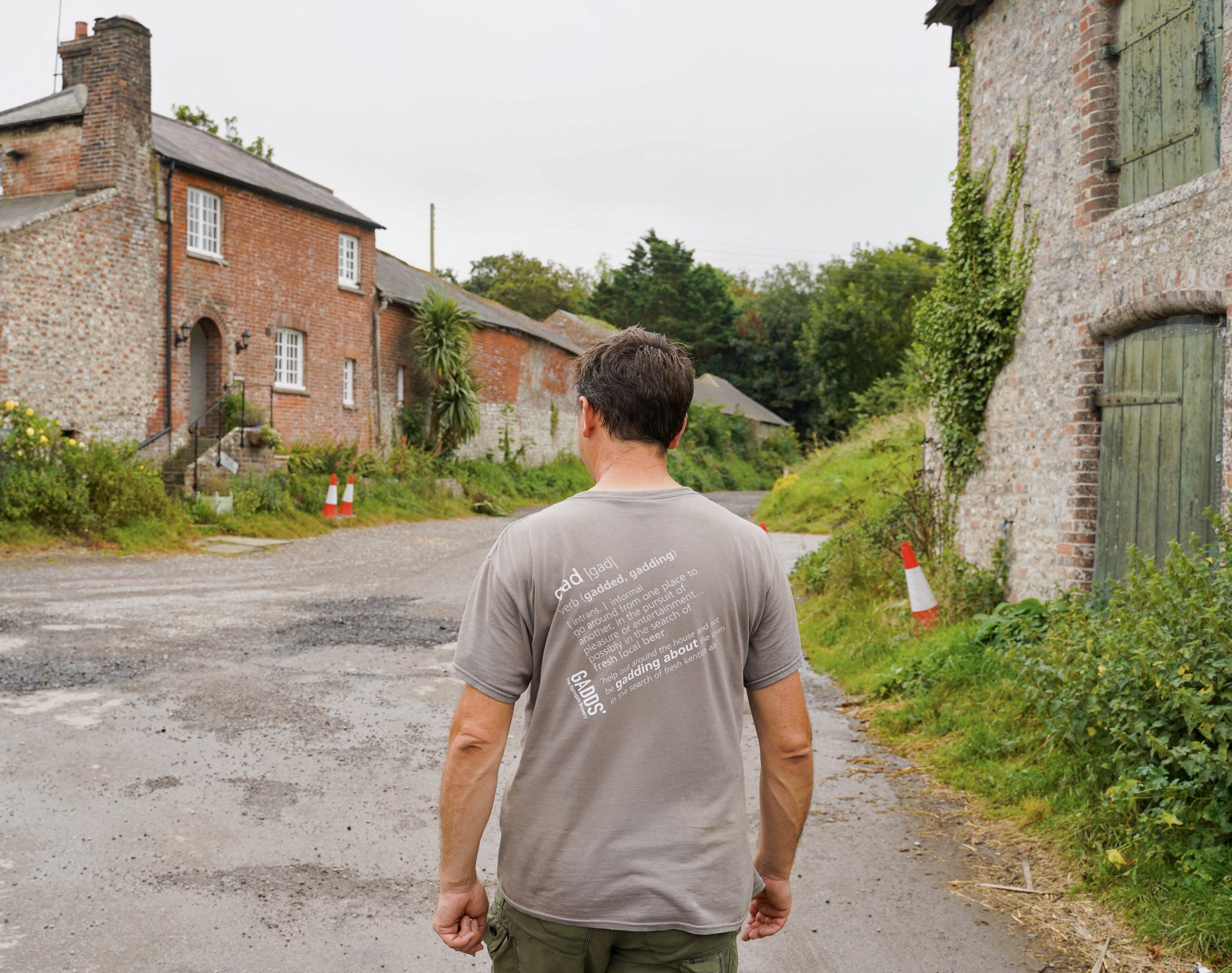All it takes is one single cell of the wrong yeast to cause a can of beer to explode, to give it an off-flavour, and to drive down your reputation and kill your cash-flow. But, an easy, fast solution might be at hand to this long-time problem. Velo Mitrovich reports.
A company that seems to stick-around over the years, like it’s been Superglued to store shelves, is Jiffy Pop Popcorn. Although it should have gone out of business years ago, superseded by microwave and packaged popcorn, it’s still here. Consisting of a disposable aluminium pan filled with popcorn kernels, oil and salt, you put it over a flame or heat, keep shaking it, and pretty soon you’re rewarded with the sound of pop-pop-pop.
Jiffy Pop is being brought up in this article, not because of its popcorn, but because of its collapsed foil cover which expands as the corn pops, ultimately looking like a pasha’s turban. During the last two hot summers in particular, something similar has been happening with beer cans.
In what seems like on too many occasions, further secondary fermentation in cans is leading to the tops expanding like a Jiffy Pop lid, and either causing the opened can to shoot out a stream of beer like foam from a fire extinguisher, or actually exploding – as in KABOOM!
And, although it hasn’t happened here – yet – in the States, exploding beer bottles have led to injuries and the ever-bloodhound-following lawsuits.
What is going on?
Diastatic yeasts – also lumped together in the ‘wild yeast’ category – can infect your beer. While the damage these yeasts cause doesn’t always lead to bottles or cans exploding, according to Kristoffer Krogerus of VTT Technical Research Centre of Finland, what they can consistently cause is off-flavours, increased alcohol levels, a drier mouthfeel, and over-carbonation and gushing.
Although major breweries can have problems with diastatic yeasts, they tend to mostly affect craft breweries hardest for reasons we’ll go into.
The diastatic yeast, traditionally referred to as Saccharomyces diastaticus – but actually the same species as the ale yeast, S. cerevisiae – causes problems in breweries due to its ability to produce an enzyme that converts dextrins in beer to sugars, which are then fermented into alcohol and carbon dioxide. While there are times when this is actually desired, such as when brewing a sour or dry saison, the majority of the time it’s not since this fermentation stage can take place after the beer is bottled or canned.
While the number of wild yeasts is near-legion, what makes diastatic S. cerevisiae such a problem is that unlike other contaminants, it can utilize the complex carbohydrates left in beer after fermentation – in other words, continue to ferment – without the need for oxygen or additional nutrients for survival, according to Dr Brian Gibson, principal scientist at VTT.
Both regular brewing yeast and problematic diastatic yeast belong to the S. cerevisiae species which makes detection difficult. Luckily, the diastaticvariant carries the extra gene STA1, which is what tests try to zero in on. However, this can be easier said than done and, just because the gene is present, it is not always an indication you will have problems.
How much is the S. diastaticus yeast costing the industry is a question without answer anywhere in the world, except when it comes up in specific lawsuits.
Most probably, many small craft breweries aren’t aware their beer is contaminated unless a pub owner, supermarket or customer directly complains to them about exploding cans or off flavours.
In most of the contamination cases, the end result with diastatic yeast is just the beer tasting pretty horrible. With this, customers just chalk it up to an inexperienced brewer and move on to another’s, never to return to yours.
A course, you’re then left wondering why your sales have suddenly dropped.
Other causes
While diastatic yeasts are the leading cause of refermentation in cans and bottles, there can be other factors as well such as ingredients used in the beer, exceptionally warm weather conditions and/or the beer not being cold-stored. Being able to find the exact cause can be a real challenge.
It should be noted here that there are more than 8,000 strains of yeast and that any of these can be considered ‘wild’, except for the commercial pitching yeast that you are intentionally adding into your wort.
If you have ever created your own sourdough starter, you are aware that there are wild yeasts in every room of your house, outdoors in your garden, in your car, on those strawberries in your lunch, and floating around in your brewery.
Last year a very fruity American beer called ‘That’s What Happens When You Let Dad Outta the House’ led to a summer of exploding cans. The beer, a collaboration between Evil Twin and Hoof Hearted Brewing, was a sour IPA made with pineapple, guanabana, vanilla and milk sugar. If this mixture is added early in the fermentation process, there will be little to no chance of refermentation in the later canning stage.
So, why add the fruit later?
By adding fruit in the very last stage, it means a much fruitier flavour beer and it is easy to taste the difference. Unfortunately, you’ve also increased considerably the chance of yeast contamination.
Because craft brewers like to push the envelope in creating new beers by adding ingredients the big players wouldn’t touch with a 10-foot stick, it’s why most times yeast contamination is a craft brewer’s problem.
Some brewers have taken a lesson from the wine industry and are using potassium sorbate and sulphites to stop further fermentation from taking place and to help preserve flavours and colours. But this is not a 100 percent guarantee.
Potassium sorbate does not stop or inhibit the fermenting in any way, according to wine and beer making supplier Ed Kraus, but what it does do is to stop the yeast from reproducing themselves. “During a typical fermentation, the wine yeast will go through several re-generations. By adding potassium sorbate to a wine, you’re making sure that the current generation is the last generation of yeast.”
But Kraus warns that some yeasts will live longer than others, which always leaves the possibility of refermentation occurring, even months down the road.
While adding sulphites will destroy some of the yeast cells, it won’t destroy all of them.
Another problem in using sulphites is that they need to be listed in your ingredients panel. Many consumers try to avoid wine with sulphites and you could lose beer customers if they see it on your can or bottle.
In theory, if fruity beer left the brewery cold, stayed cold during shipment, was warehoused cold and kept cold in the supermarket, and then consumers didn’t allow the beer to become warm, there would be no problems even if there was wild yeast contamination. With small craft brewers who only sell by the keg, this is actually the world they’re living in, with their kegs staying constantly cold. But, they start bottling and suddenly they have a yeast problem that they might have had all along.
Some breweries say that consumers don’t allow milk to become warm for days on end, so why should they treat beer any differently? However, many consumers are used to pasteurised beer which can take the heat and see no issue in letting it get warm.
Should breweries then have a big label on their cans: “Warning: this can may explode if allowed to become warm!”, have their beer in cans that look like dynamite; or should they just make beer that won’t explode?
An industry guide for brewers published by Craft Beer & Brewing notes that “the recent trend of adding unfermented fruits and extracts to unfiltered beer just before packaging represents an extreme risk for refermentation.” Flash-pasteurizing the finished beer or adding the fruit before fermentation decreases the viability of the yeast and lessens the risk of explosion.
The big questions with these exploding fruit beers are: Is the commercial yeast used contaminated; is the natural sugar in the fruit feeding live brewers yeast that still exists in the cans; are there diastatic yeasts already in the can and the addition of fruit is like throwing petrol on a fire; or are there wild yeasts in the fruit that is being added?
To this list can be added: Is there yeast contamination coming from your workers’ clothing, hair, etc; is your brewery less than 100% clean; did the problem come through dry hopping or wort ingredients; is there yeast in your environmental air; or, is the problem coming from the bottling side of your operation?
In a review of contamination events throughout Europe over a 10-year period published in the MBAA Technical Quarterly, it stated that 71% of S. diastaticus contamination events were traced to the bottling hall.
While the gut reaction is to make the first port of call for an investigation with your yeast provider, your contamination could have come from literally out of the air.
Burning Brothers Brewing in St Paul, Minnesota, issued an apology after its cans started exploding. It brought in two different external testing labs and contracted a third-party quality control specialist to try to figure out exactly what the problem was. Although Burning was able to attribute the cause to a strain of wild yeast, none of the brought-in team was able to pinpoint where the strain was coming from.
A test solution
Breweries have told TBJ that current tests take time – anywhere from several days to a week – are complicated, and do not always give a true assessment as to whether or not the presence of gene STA1 will cause problems. This can lead to beer being dumped that would have been fine being sold.
Brian Gibson of VTT Technical Research Centre of Finland tells TBJ that the research centre specialises in real world problems – including yeast – and that they saw diastaticus contamination as a major problem in the beer industry.
“Why is this a specific problem with craft breweries and becoming more common? It’s because craft brewers are more reluctant to pasteurise and filter their beer,” says Gibson. “Along with this, craft brewers are more experimental in the yeast and other ingredients they use.”
“At VTT we have discovered why some strains with the gene are active, and therefore problematic, while others are not. The difference was due to a deletion in the promoter of the STA1 gene – in other words, the genetic sequence in front of the gene controlling how much the gene is expressed”, explains Research Scientist Kristoffer Krogerusfrom VTT
The team then developed a new genetic test, which can be used in exactly the same way as the current industry standard, but which can differentiate the problematic strains with the active STA1 gene from those with the inactive form of the gene.
According to Krogerus, traditional genetic test can only detect whether the strain contains the STA1 gene or not. It cannot differentiate spoilage yeasts from non-spoilage yeasts. Previously, one would have to combine the genetic test with a microbiological test, where the yeast is grown on special agar plates – a process that takes several days.
“The new method offers breweries savings in time because results can be achieved in hours instead of weeks, and also cost savings and a more reliable quality control. It also decreases the times beer batches are unnecessarily recalled from shops or discarded,” says Krogerus.
Gibson says that the test is suited for the largest down to the smallest brewery. VTT is now looking to license the test through a third-party vendor.
If your brewery has a batch that has S. diastaticus contamination and you’re lucky enough to catch it early on before it goes out the door, good for you. You’ll be out the time and money that had gone into producing the beer, the time and money spent thoroughly cleaning your brewery, and the money lost in missing production deadlines and disappointing your customers – but it could be a lot worse.
How did you detect it? Do you have an excellent system of checks in place to catch things like this, or was it down to just luck? Do you know how it entered your brewing chain? And, are you sure the problem was diastatic yeast?
If it did make it out the door, how did you find out? While talking about exploding beer bottles and cans is more interesting, in most cases the yeast just creates over carbonation and a bad flavour. Nine times out of 10, when most of us experience a bad product, we don’t contact the company, we just chalk it up to experience and never buy it again.
Months could go by before you start connecting the dots between sudden poor sales and the chance of S. diastaticus affecting your beer.
Without actually seeing it in operation to base our opinion, but going solely on reports, TBJ thinks that the tester created by VTT Technical Research Centre of Finland can become your brewery’s best friend. We only hope that a commercial company sees the potential in it and helps to get it out the door and into your hands as soon as possible.
TBJ will continue to follow the developments in Finland.








